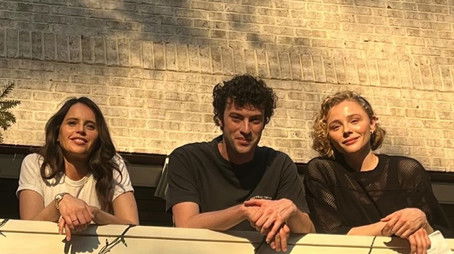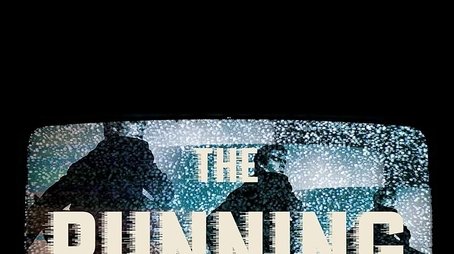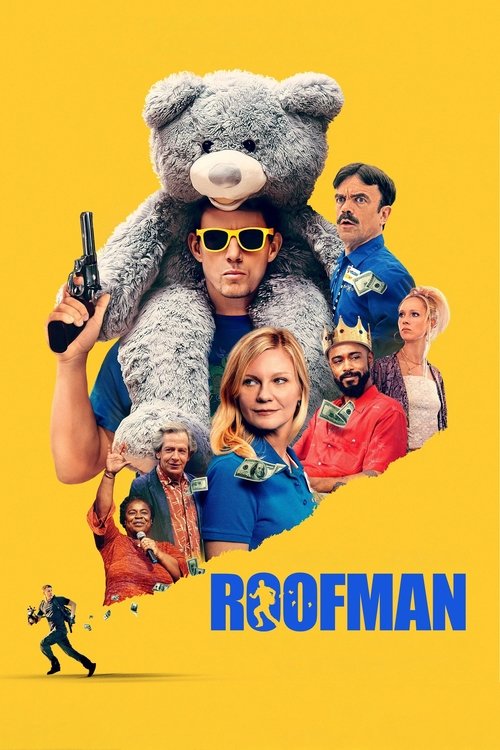
Ask Your Own Question
What is the plot?
By 2017 the world has collapsed into scarcity and fractured authority; governments have disintegrated, supplies of food and oil have dwindled, and a militarized police regime divides the former United States into controlled zones. Media outlets operate under strict censorship and a single state-run entertainment conglomerate, the Network, dominates public information. In Bakersfield, California, a night patrol helicopter answers a report of a food riot in a refugee camp where roughly fifteen hundred unarmed civilians, many of them women and children, have gathered to demand supplies. Captain Ben Richards, serving as a valiant law enforcement pilot, is ordered by command to open fire on the crowd. Richards refuses the directive and confronts his fellow officers inside the aircraft; an intense argument escalates into violence and the chopper plummets. Richards falls from the helicopter into the streets below. The Network immediately seizes control of the narrative: edited footage and false testimony label Richards the "Butcher of Bakersfield," accusing him of massacring the demonstrators he tried to save.
Eighteen months after the Bakersfield incident, Richards endures forced labor behind barbed wire in a detention sector that houses criminals and dissidents. Each prisoner wears an explosive collar locked around the neck, calibrated to detonate if tampered with or if the wearer crosses the perimeter's sonic barrier. Inside this grim compound Richards meets inmates Weiss and Laughlin, who are hardened yet resourceful. Tensions flare inside the camp and the two men incite a riot that draws guards and security drones. During the chaos Weiss, Laughlin and Richards surge toward the wall; in the mêlée they manage to short the perimeter's sonic field by sabotaging a transmitter, creating a gap in the barrier that lets them drop down into the nocturnal streets of Los Angeles. As they flee through ruined neighborhoods they are hunted by patrols, and the collars around their necks pulse as a constant threat should they stray beyond the invisible boundary.
On the run, the escapees encounter members of an underground resistance. Stevie, a streetwise operative, leads them to a hideout where Mic, the resistance leader, evaluates Richards. Mic and his group harbor a plan to remove the explosive collars; after hesitation Mic agrees to risk surgery and sabotage to free Richards and his companions from their lethal constraints. In a tense sequence set in a makeshift clinic, Mic disables the collars' triggers and removes them manually, rendering the group free from the immediate threat of remote detonation. Richards learns that the Network's most popular program is The Running Man, a gladiatorial broadcast that condenses state violence into ratings: convicted offenders are selected as contestants and hunted through an engineered urban grid by lethal "stalkers," mercenary killers outfitted with high-tech weaponry. The show's host, Damon Killian, presents the spectacle with a polished smile while the Network uses the program to distract and pacify the populace.
Richards crosses paths with Amber Mendez, a former tenant of his brother's apartment who has lived hidden in the city. She harbors secret knowledge and sympathies for dissidents. Richards, Weiss and Laughlin move through the city and are eventually apprehended by Network forces trained to capture escapees for The Running Man. Damon Killian sees marketing gold in the man the Network branded a butcher; he dispatches a proposition. On live television Killian forces Richards to choose between participating as a contestant in the show or watching his allies, Weiss and Laughlin, be murdered on camera. Killian's producers demonstrate that the collars the prisoners had worn are now under remote surveillance and that cooperative compliance will become the only path to survival worth broadcasting. Under duress and to protect his friends Richards agrees to enter the game.
The Running Man grid is a sprawling, booby-trapped arena composed of abandoned streets, dilapidated buildings and manufactured kill zones. Killian introduces the stalkers: costumed hunters with lethal specialties. Among them are Buzzsaw, who wields a massive spinning chainsaw; Dynamo, an electrified pursuer who kills by delivering lethal voltage to anyone he corners; and other stalkers each designed for TV spectacle. From the starting gate Richards and the other contestants are pushed into the grid, collars still active and with Network cameras tracking every move. The hunt begins with an aerial countdown and a swarm of drones broadcasting the chase to millions of viewers.
In the first major conflict Richards confronts Buzzsaw in a narrow alley lined with abandoned vehicles. Buzzsaw charges, the chainsaw roaring; Laughlin moves to shield Richards. Buzzsaw slams the blade forward and Laughlin is struck with the full force of the chainsaw. He suffers grievous wounds and dies instantly as the machine severs his torso; the stalker drags the mangled body away while cameras capture the violence for the audience. Richards, enraged and wounded, chases Buzzsaw through a collapsed overpass. He tackles the stalker, grapples the spinning blade and tears it from Buzzsaw's grip, using the exposed motor to prop the stalker into oncoming rubble. Buzzsaw's body is crushed beneath a falling billboard when Richards dislodges the debris during the struggle, and the chainsaw's blade finally stops; Richards kills Buzzsaw by forcing him under the collapsing metal, breaking his neck in the impact.
Pursued deeper into the grid, Richards and Weiss run into Dynamo during a segment staged near a flooded subway entrance where water and electrical infrastructure converge. Dynamo extends conductive whips and hurls bolts of electricity; Weiss attempts to draw his fire to create an opening for Richards. Dynamo clocks Weiss with a surge that ignites the water and channels an immense shock through Weiss's body. Weiss convulses and dies as the current hits him full force, his heart stopping from the electrocution; the broadcast captures his death in an instant that the Network packages as yet another spike in the show's ratings. Dynamo continues to hunt Richards, brandishing crackling tendrils. Richards leads Dynamo toward a ruptured high-pressure water main; he maneuvers the stalker into the spray and then severs a live conduit. The torrent conducts current back into Dynamo's systems, shorting the stalker and causing an electrical overload; Dynamo's armor explodes in a shower of sparks and molten metal, and the stalker collapses, burned and crushed when a concrete slab drops on top of him. Richards survives the blast and scrambles clear.
As Richards dispatches the stalkers one by one, other contestants die in vividly staged confrontations. The Network intercuts close-ups of screaming fans with footage from the grid. Evidence later seen by the resistance reveals that the winners of the previous season were not allowed to exit the Network alive; archival clips buried in the Network's vaults show those supposed winners ambushed and executed by the very stalkers used for carnivalized violence, their deaths framed as dramatic climaxes. Those recordings, suppressed inside secure servers, show men and women who had "won" the show dragged off-camera and shot or dismembered to prevent them from exposing the program as a government instrument. The footage proves that the Network fakes triumphs and eliminates any survivor who might reveal the truth.
While Richards struggles through the grid he becomes increasingly determined to expose the truth that the Network concealed about Bakersfield. Amber Mendez, who has been trailing the broadcast from a safehouse and working with the resistance, possesses the uplink code to the Network's satellite relay. That code is a literal door into the broadcast signal; she acquired it after memorizing it from notes entrusted to her by Weiss before his death. Mic coordinates a plan: Amber will seize the Network's live feed and replace Killian's controlled narrative with the unedited tapes that show the Bakersfield event as it truly occurred.
Richards continues to kill stalkers and uses the grid's architecture to his advantage, laying traps and setting small explosions to bottleneck pursuers. In a confrontation in a narrow shopping arcade he encounters multiple hired killers; he uses his strength and improvised weapons--pipes, floor tiles and the environment--to neutralize them. In a rooftop chase he leaps across a gap and catches a pursuing mercenary by the throat, snapping it and hurling the body down into a display window below. The Network cuts to commercial segments that amplify the drama, but the resistance's plan moves forward behind the scenes.
Amber, accompanied by Mic and a small rebel commando team, infiltrates the Network's uplink center during the chaos. They move quickly through service corridors, neutralizing security cameras and subduing technicians without bloodshed when possible. At the main control room Amber enters the transmitter chamber and keys the uplink code into the satellite console. Mic orders the comms operators detained and forces the server racks open to install a live feed override. With seconds left before Killian regains control, Amber grabs the master switch and flips it. The Network's nationwide pipeline falls under the rebels' command.
Mic plays the original, unedited footage of the Bakersfield incident over the Network. The tape shows Richards in the helicopter refusing to fire as the protest throngs gather, then depicts the crash from an unmanipulated angle; the clip proves Richards did not slaughter the crowd. Additional hidden recordings reveal camera feeds from last season that show the supposed winners being hunted after their "victory" and executed by the Network's operatives and stalkers off-camera. The broadcast strips away the staged narrative Killian built: the public sees that their entertainment is a façade used to silence dissent and manufacture consent.
Back in the studio, Killian watches the feed collapse and tries to salvage his show. He pleads with producers and orders the control room to cut the rebels' signal. He strolls out onto the stage and addresses the studio cameras in a calm, practiced tone, attempting to spin the exposure into sympathetic damage control. The running studio audience, who had been cheering and jeering all night, sees the raw tapes and begins to hiss as outrage ripples through the seats. Killian tries to regain authority by invoking spectacle and charm, but the control room doors burst open. Richards and his band of rebels storm into the studio from the grid's access tunnel beneath the set.
A final confrontation unfolds on Killian's stage. Richards strides toward Killian through overturned props and stunned crew members. Killian, still wearing his on-air smile, keeps trying to talk him down, offering excuses and apologies calculated for a camera. Richards forces Killian to understand that public approval has evaporated; he seizes the showman, drags him toward a rocket-propelled sled used earlier as a stage prop for the show's finale, and straps Killian into the seat. The producers scream for halt, but Mic overrides the sled's safety interlocks and engages the launch sequence. The sled fires down a tunnel that leads from the backlot to the main grid. It accelerates through the release ramp with Killian screaming as the sled picks up impossible speed. There is no safety net at the end of the tunnel; the sled exits into the open where a massive billboard bearing Killian's own beaming image hangs over the facade of a studio building. The sled slams into the billboard and the explosive charge on the sled detonates on impact. Killian's body is obliterated by the blast; the billboard explodes in flames, and fragments of Killian's set and personal likeness scatter across the lot. The camera records the moment in stark, unfiltered detail as the network signal fractures.
The Network's live feed, now controlled by Amber and the rebels, shows Killian's end and the suppressed footage that proves Richards' innocence and the murders of last season's so-called winners. Across the nation viewers recoil as the truth replaces the staged narrative. Once the broadcast exposes the Network's crimes, civil order fractures; uprisings ripple through the controlled zones as citizens respond to the evidence of manipulation and murder. In the studio, Richards walks out to the edge of the stage and finds Amber and Mic waiting. He embraces Amber tightly amid the rubble and the ruins of the set; the final shots on the Network show their entangled figures as the signal delivers the true images to a stunned populace.
As armed Network guards and production personnel scatter and rioters surge in the streets, the camera cuts away from the ruined studio to the larger city where pockets of resistance ignite demonstrations now that the truth is visible. Richards stands with Amber and the rebels as outside the complex people gather, shouting, throwing banners and tearing down posters. The broadcast continues to relay the unredacted tapes for as long as the uplink holds. The final frame shows Richards and Amber embracing on the stage with debris falling around them while the city outside erupts into revolt. The picture goes dark as the signal begins to fail, leaving the concrete outcomes of the uprising unfolding beyond the camera's final extinguished feed.
What is the ending?
At the end of The Running Man (2025), Ben Richards survives the deadly 30-day game, outwitting the Hunters and exposing the corrupt system behind the show. The final scenes show Ben confronting the show's ruthless producer Dan Killian, leading to Killian's downfall. Ben secures the prize money to save his sick daughter and reunites with his family, while the public begins to question the morality of the brutal televised spectacle.
The ending unfolds in a tense, scene-by-scene progression:
-
Final Confrontation with Hunters: As the 30-day game nears its end, Ben Richards, having survived numerous deadly encounters, faces the last and most dangerous Hunters. Using his resourcefulness and grit, he evades and defeats them one by one, demonstrating his growth from desperate contestant to formidable survivor.
-
Showdown with Dan Killian: After surviving the Hunters, Ben confronts Dan Killian, the charming but ruthless producer who orchestrated the game. This confrontation takes place in the control center of the show, where Killian attempts to manipulate the outcome to maintain control and ratings. Ben exposes Killian's corruption and cruelty live on air, turning public opinion against the show's exploitative nature.
-
Public Reaction and System Collapse: The broadcast of Killian's exposed manipulation causes a public uproar. Viewers, previously addicted to the violent spectacle, begin to question the ethics of the game and the society that supports it. This marks a turning point in the narrative, highlighting the conflict between entertainment and humanity.
-
Ben's Victory and Family Reunion: With the game over, Ben claims the grand prize of one billion dollars. He uses the money to secure medical treatment for his sick daughter, fulfilling his initial motivation for entering the game. The film closes with Ben reunited with his wife Sheila and daughter, symbolizing hope and the restoration of family bonds after the harrowing ordeal.
-
Fates of Other Main Characters:
- Dan Killian: Defeated and disgraced, his fate is left implied as he loses power and influence.
- Sheila Richards: Ben's wife, who has been anxiously awaiting his return, is reunited with him and their daughter.
- Amelia Williams: A civilian hostage who was taken during the game, she survives and is freed by Ben.
- Bobby Thompson (the host): His role diminishes as the show's legitimacy collapses.
- Hunters like Evan McCone: Most are killed or neutralized by Ben during the final stages.
The ending emphasizes Ben's transformation from a desperate man into a symbol of resistance against a corrupt, violent entertainment system, while also resolving his personal quest to save his family.
Who dies?
Yes, characters do die in the 2025 film The Running Man. The movie centers on a deadly game show where contestants, called "runners," must survive 30 days while being hunted by professional assassins known as "Hunters." The Hunters' job is to track down and kill the runners, making death a central and expected outcome for many characters in the story.
Specific deaths include:
-
Various runners and workers: The film depicts multiple deaths of contestants and workers involved in the game. For example, guards are shown piling up the bodies of several dead workers ready for incineration, indicating that many people die as part of the brutal game environment.
-
Hunters and contestants: Throughout the 30-day survival competition, many runners are killed by the Hunters. The exact names and detailed circumstances of each death are not fully listed in available summaries, but the premise makes it clear that death is frequent and often violent, involving assassinations during the chase.
-
Ben Richards' opponents and Hunters: As the protagonist Ben Richards (played by Glen Powell) fights to survive and save his sick daughter, he inevitably confronts and causes the deaths of some Hunters and other contestants. These deaths occur during intense action sequences as he outwits and battles his pursuers.
The deaths happen throughout the film's timeline, primarily during the 30-day game show period. The causes of death are mostly violent--gunfire, combat, and assassination attempts by the Hunters. The game's ruthless nature and the showrunners' manipulation make these deaths both a spectacle for the audience within the film and a critical plot driver.
No detailed list of named characters who die with exact timing and method is publicly available yet, but the film's core premise and scenes confirm multiple character deaths as a fundamental element of the story.
Is there a post-credit scene?
The 2025 movie The Running Man directed by Edgar Wright does have a post-credits scene. While detailed descriptions are limited, it is known that the protagonist Ben Richards makes a vow during the film to return and burn down the game show building, which hints at further conflict beyond the main story. Additionally, brief clips in the trailer show Ben fighting inside a plane cockpit, suggesting the story continues in an airborne setting after the main events. This implies the post-credits scene likely sets up a sequel or continuation involving this new setting and unresolved vendettas.
No explicit detailed description of the post-credits scene is publicly available yet, but fan discussions and trailer analysis indicate it involves Ben Richards preparing for a return to confront the show's producers, possibly escalating the conflict to a new level, such as a high-stakes fight on a plane.
What motivates Ben Richards to enter The Running Man game show in the 2025 film?
Ben Richards is motivated to enter The Running Man game show primarily to save his critically ill daughter by winning the prize money, as he is desperate and working-class, trying to provide for his family in a dystopian society.
Who is Dan Killian and what role does he play in the story?
Dan Killian, played by Josh Brolin, is the charming but ruthless producer of The Running Man show who convinces Ben Richards to enter the deadly competition.
What is the nature of the Hunters in the film and who are some notable characters among them?
The Hunters are professional assassins who pursue the contestants, known as Runners, across the world in the deadly game. Notable characters include Evan McCone, a hunter played by Lee Pace, and other hunters portrayed by Karl Glusman and others.
How does Ben Richards' character differ from the protagonist in the 1987 adaptation?
In the 2025 film, Ben Richards is a desperate father trying to save his sick daughter, an ordinary man relying on grit and instincts. This contrasts with the 1987 film where Richards was a former police helicopter pilot framed for a massacre, motivated to clear his name and expose corruption.
Who assists Ben Richards during his time on the run in the film?
Ben Richards receives help from several characters including Elton Parrakis, a rebel played by Michael Cera, and a man played by William H. Macy who assists him while he is on the run.
Is this family friendly?
The 2025 film The Running Man is a dystopian action thriller involving a deadly game show where contestants are hunted for sport. It is not family friendly due to its intense violence, some profanity, and potentially disturbing themes related to survival and being hunted.
Potentially objectionable or upsetting aspects for children or sensitive viewers include:
- Violence and Gore: The film features violent chase and combat scenes, with hunters pursuing contestants, which may include blood and injury.
- Profanity: Some use of strong language is expected.
- Intense and Frightening Scenes: The premise of being hunted for survival creates suspense and tension that could be distressing.
- Sexual Humor: There is at least one crude humor moment involving a character in underwear, which may be inappropriate for younger audiences.
No detailed plot spoilers are revealed here, but the overall tone and content suggest it is intended for mature audiences rather than children or sensitive viewers.











